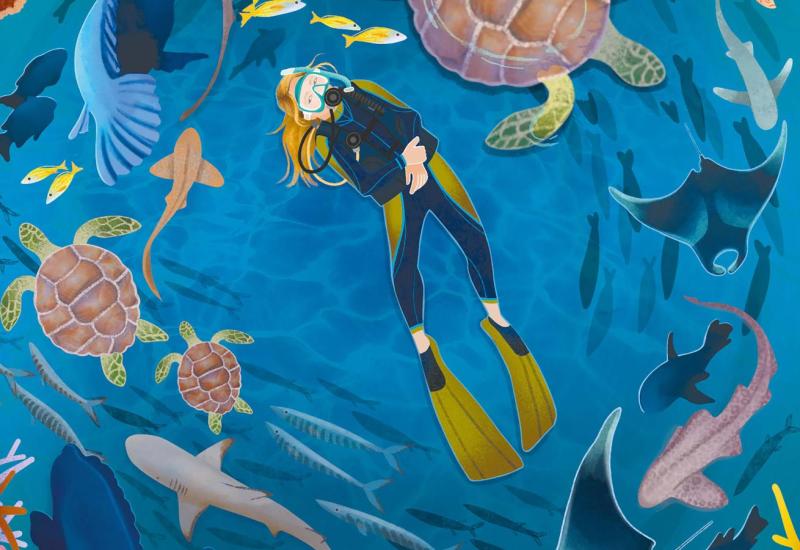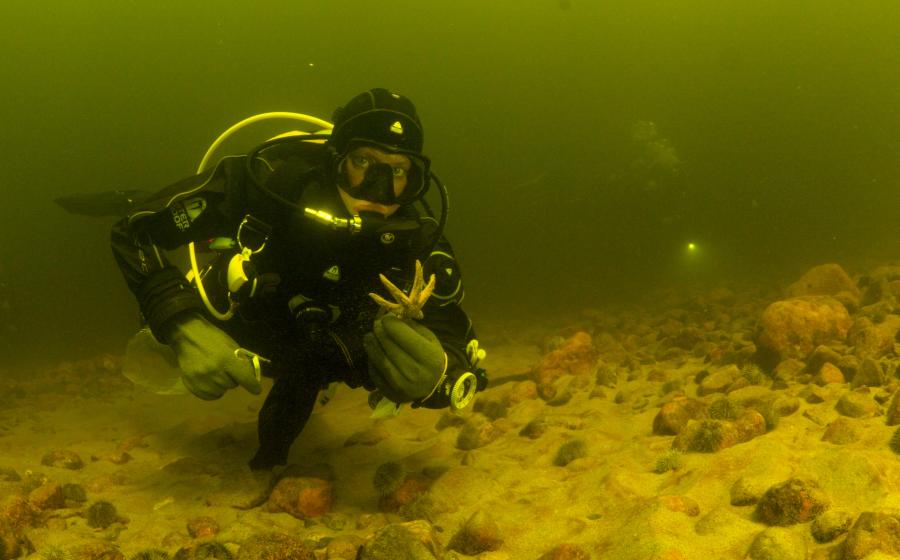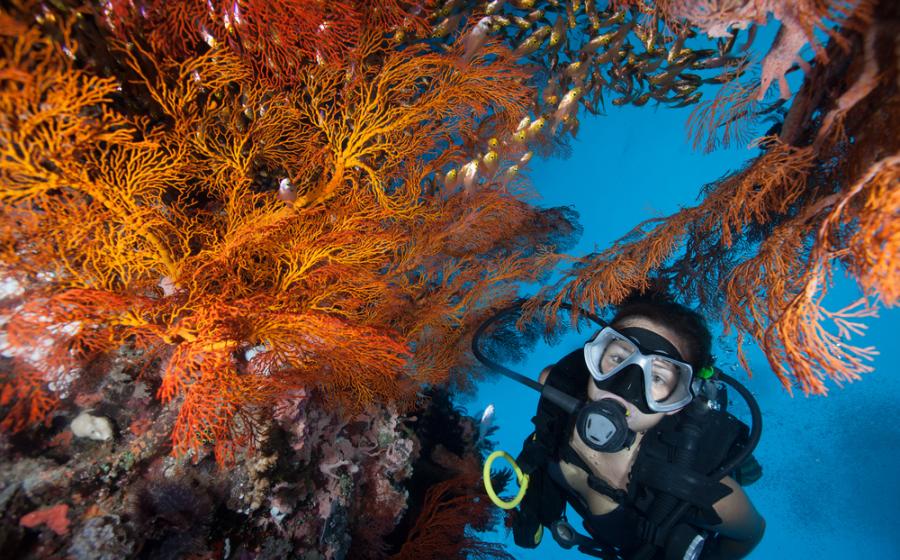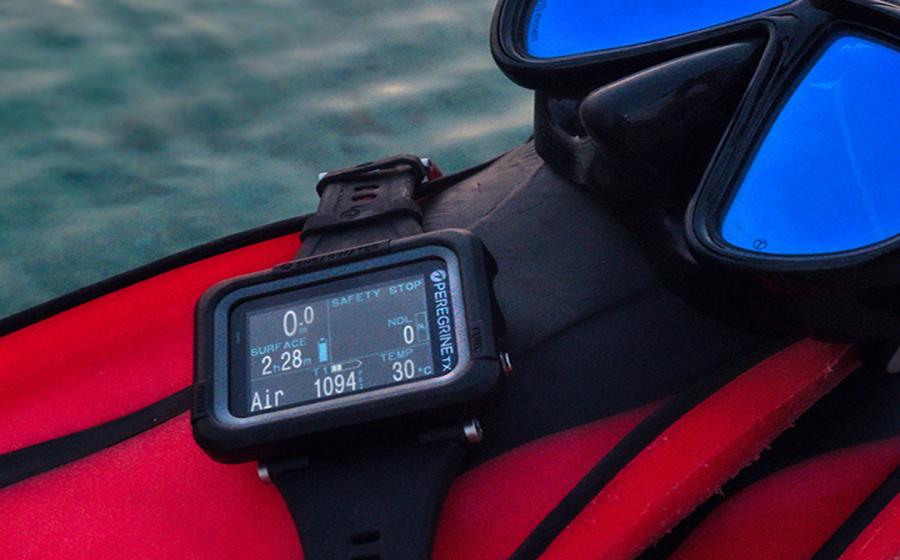Drive and Dive: Florida Panhandle Shipwreck Trail
When divers dream of Florida, their visions usually run to coral reefs in the Keys, or Gulf Stream drifts off the Atlantic coast.
But if a road trip is involved, divers from the central states might want to set their sites a bit farther north. Dallas, Indianapolis and Cincinnati are all within a long day’s drive of Florida’s northern Gulf beaches, while it’s another 800 miles to Key West.
But geography isn’t the only reason why this destination is a popular target for Midwestern divers. Truth is, Florida’s Panhandle — the region stretching from Tallahassee to Pensacola — offers ample underwater attractions, both natural and man-made.
When the USS_ Oriskany_ slipped beneath the waves in May 2006, it earned the title of the world’s largest artificial reef. The intentional sinking of an Essex-class carrier earned Pensacola international media attention, and the “Mighty O” remains one of the region’s signature underwater attractions.
There’s much more to the Panhandle wreck-diving scene than “the great carrier reef,” and some feel that the media attention devoted to Oriskany shifted focus from the many other first-class wrecks and artificial reefs the region has to offer. Panhandle waters hold more than 40 known shipwrecks accessible to divers, ranging from the remains of a WWI battleship to minesweepers, freighters and ocean-going tugboats.
To highlight the Panhandle’s sunken treasures — and to revitalize dive tourism following the Deepwater Horizon oil spill — the state of Florida’s Bureau of Archaeological Research created the Florida Panhandle Shipwreck Trail. Working with area dive operators, the bureau identified a dozen wrecks that offered not only a great diving experience, but also a noteworthy history: a tramp steamer that supported Adm. Richard Byrd’s 1928 Antarctic expedition; a minesweeper that survived a midget submarine attack and a kamikaze raid during WWII; a banana boat sunk by a U-boat, refloated, and then used for target practice by the Navy. And, of course, the Oriskany.
To publicize the trail, organizers created a logbooklike passport that allows divers to earn stamps and bragging rights for each wreck visited. The trail offers something for divers of every level, from the Vamar, which sits in just 25 feet of water less than 4 miles from the beach, to the Oriskany, which bottoms out below 200 feet, and requires extended range credentials to reach the main flight deck. The majority of passport wrecks are in the 80- to 100-foot range. Some are broken into critter-filled debris fields, while most of the purpose-sunk vessels remain largely intact, and have been prepped for safe access by divers. The program’s website (floridapanhandledivetrail.com) offers a wealth of information on the wrecks, and links to participating operators.
In addition to shipwrecks, Panhandle waters offer a variety of additional fish habitats. The most interesting natural reefs in the northern Gulf are ledges. Undercut limestone ridges with reliefs of up to 5 feet rise from sandy plains, providing an anchor for soft corals and sponges, plus habitat and hiding places for everything from frogfish and lobster to grouper and cobia.
To supplement the existing substrate, various groups have created artificial hard bottoms that range from rubble piles and surplus military ordnance to purpose-made reef-ball arrays. Most require a boat ride for access, but some, such as Pensacola’s Navarre Beach, are within swimming distance of shore.
In fact, the Panhandle has some of the best shore diving in the Southeast, including a pair of excellent jetty dives. The dredged inlets at Destin and Panama City are bolstered by boulder ramparts that provide divers with the equivalent of a nearshore wall dive, populated with a wide variety of interesting marine life. Depths along these breakwaters can range to 50 or 60 feet, and during slack high tide, visibility can often exceed 50 feet. The shore dive at Destin requires a fair bit of a trek across a white-sand strand, while the St. Andrews State Park jetty is a chip shot away from the parking lot.
Florida’s Panhandle is an extremely popular vacation spot with visitors from across the southeastern United States, which can be both a boon and a curse for divers. In season, beachfront hotels command a premium price tag, and popular restaurants are always on a wait. But there are bargains to be had for those willing to search, and area dive shops can sometimes negotiate special rates for lodging. Spring break can verge on craziness, but the summer season is more sedate and family friendly. A best bet for those with flexible schedules are the shoulder seasons in May and September. When planning a trip, rather than assuming you can just show up and pick your wreck, it’s a good idea to make a few phone calls to discuss trip schedules and options with the operators.
Itinerary
Day One
The adventure begins at Panama City's Pirate’s Cove Marina, where the 36-foot Fintastic, operated by the Dive Locker, takes you for a wreck double-header on the Accokeek and the Black Bart. After checking into the beachfront Chateau Motel (chateaumotel.com), gear up for a high-tide, sunset dive at St. Andrews Jetty, followed by crab claws at Sharky’s (sharkysbeach.com).
Day Two
It’s a 6:30 a.m. departure for Destin to rendezvous with Scuba Tech’s 45-foot Sea Cobra. First stop is Whitehill Reef, then it’s on to the_ Janet_, where especially around the wheelhouse, the cobia and amberjack schools are thick. Stop in for lunch at Dewey Destin’s (destinseafood.com) before heading to Pensacola. Hit Bamboo Willie’s (bamboowillies.com) for sunset, but go easy on the Bushwackers.
Day Three
On advice from the crew at H2O Below, you save the Oriskany for a later date, and instead rack up a pair of wrecks — the rubble field of the_ San Pablo_ and the Pete Tide II, which is covered in swirling schools of baitfish. Head home with four stamps in your Shipwreck Trail Passport, and plans for your next visit to the Panhandle.
Need to Know
Dive Conditions: Water temperatures can range from the low 60s in winter to the low 80s in summer. It’s best to check with a local operator for information on conditions, and include a spare vest or hood in case things get chilly at depth. Offshore visibility can reach 100 feet on rare occasions, but you can usually count on at least half that offshore, and anywhere from 20 to 50 feet at the jetties and off the beach.
When To Go: The region attracts a small community of year-round divers, but for most, the season doesn’t get started until Easter and can stretch into late October. On summer weekends, both boats and hotels book up early. September provides a prime combination of still-warm water, fewer tourists and lower hotel rates.
Operators: In Panama City, the Dive Locker (divelocker.net) offers two- and three-tank offshore trips for $79 and $109; ScubaTech (scubatechnwfl.com) and Emerald Coast Scuba (divedestin.com) in Destin do two-tank trips for $90; Pensacola’s H2O Below (ussoriskanydiver.com) offers a two-tank trip to the Oriskany for $150, or other area wrecks and reefs for $95. The Gulf Coast Dive Pros (florida-divepros.com) have been serving Pensacola since 1988, with an award-winning SCUBA Training Program; Bay Breeze Dive Center (baybreezescuba.com) is also in Pensacola, and conveniently located directly on the water in Pensacola Bay.
Must Sees: Top Gun fans shouldn’t miss Pensacola’s National Naval Aviation Museum. From parasailing to live music, there’s no shortage of entertainment options in Destin. Panama City offers natural attractions such as Camp Helen State Park and St. Andrews State Park, where you can walk pristine beaches.
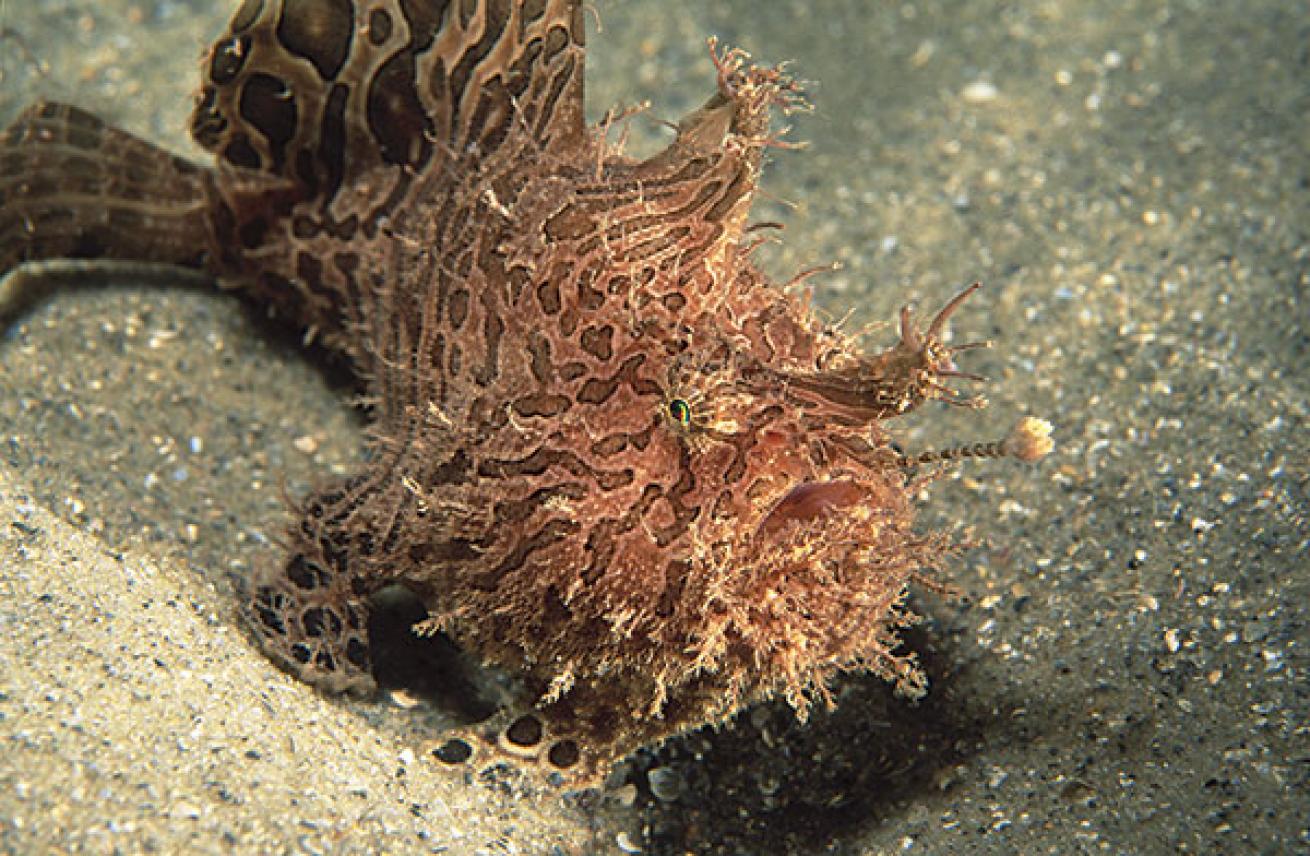
Rene Frederic/SuperstockStriated frogfish can be seen when wreck diving in the Florida Panhandle.
When divers dream of Florida, their visions usually run to coral reefs in the Keys, or Gulf Stream drifts off the Atlantic coast.
But if a road trip is involved, divers from the central states might want to set their sites a bit farther north. Dallas, Indianapolis and Cincinnati are all within a long day’s drive of Florida’s northern Gulf beaches, while it’s another 800 miles to Key West.
But geography isn’t the only reason why this destination is a popular target for Midwestern divers. Truth is, Florida’s Panhandle — the region stretching from Tallahassee to Pensacola — offers ample underwater attractions, both natural and man-made.
When the USS_ Oriskany_ slipped beneath the waves in May 2006, it earned the title of the world’s largest artificial reef. The intentional sinking of an Essex-class carrier earned Pensacola international media attention, and the “Mighty O” remains one of the region’s signature underwater attractions.
There’s much more to the Panhandle wreck-diving scene than “the great carrier reef,” and some feel that the media attention devoted to Oriskany shifted focus from the many other first-class wrecks and artificial reefs the region has to offer. Panhandle waters hold more than 40 known shipwrecks accessible to divers, ranging from the remains of a WWI battleship to minesweepers, freighters and ocean-going tugboats.
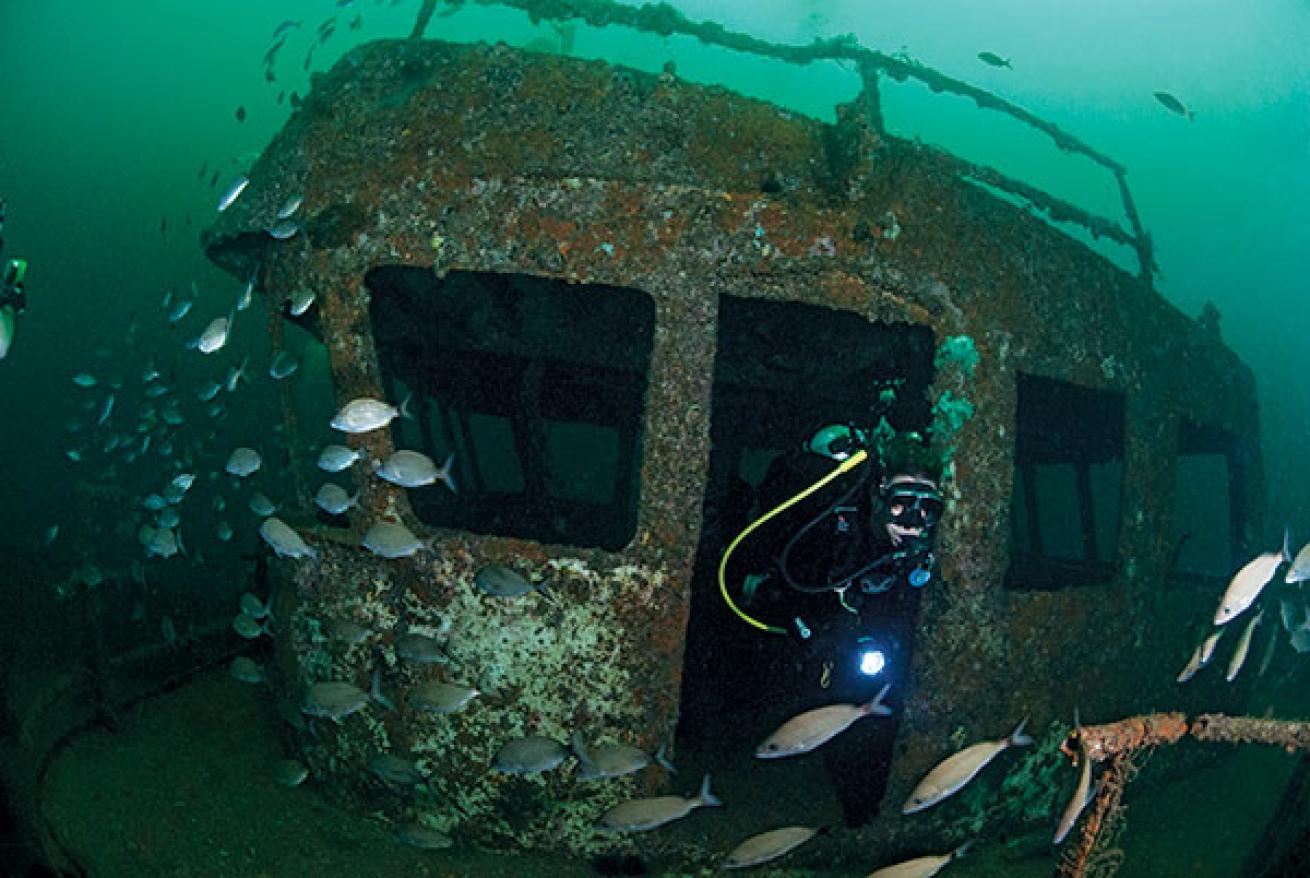
Jesse CancelmoAt a depth of 100 feet, the Pete Tide II once supplied crew and supplies to offshore oil rigs, and now hosts schools of spadefish and minnows, plus wahoo and tuna.
To highlight the Panhandle’s sunken treasures — and to revitalize dive tourism following the Deepwater Horizon oil spill — the state of Florida’s Bureau of Archaeological Research created the Florida Panhandle Shipwreck Trail. Working with area dive operators, the bureau identified a dozen wrecks that offered not only a great diving experience, but also a noteworthy history: a tramp steamer that supported Adm. Richard Byrd’s 1928 Antarctic expedition; a minesweeper that survived a midget submarine attack and a kamikaze raid during WWII; a banana boat sunk by a U-boat, refloated, and then used for target practice by the Navy. And, of course, the Oriskany.
To publicize the trail, organizers created a logbooklike passport that allows divers to earn stamps and bragging rights for each wreck visited. The trail offers something for divers of every level, from the Vamar, which sits in just 25 feet of water less than 4 miles from the beach, to the Oriskany, which bottoms out below 200 feet, and requires extended range credentials to reach the main flight deck. The majority of passport wrecks are in the 80- to 100-foot range. Some are broken into critter-filled debris fields, while most of the purpose-sunk vessels remain largely intact, and have been prepped for safe access by divers. The program’s website (floridapanhandledivetrail.com) offers a wealth of information on the wrecks, and links to participating operators.
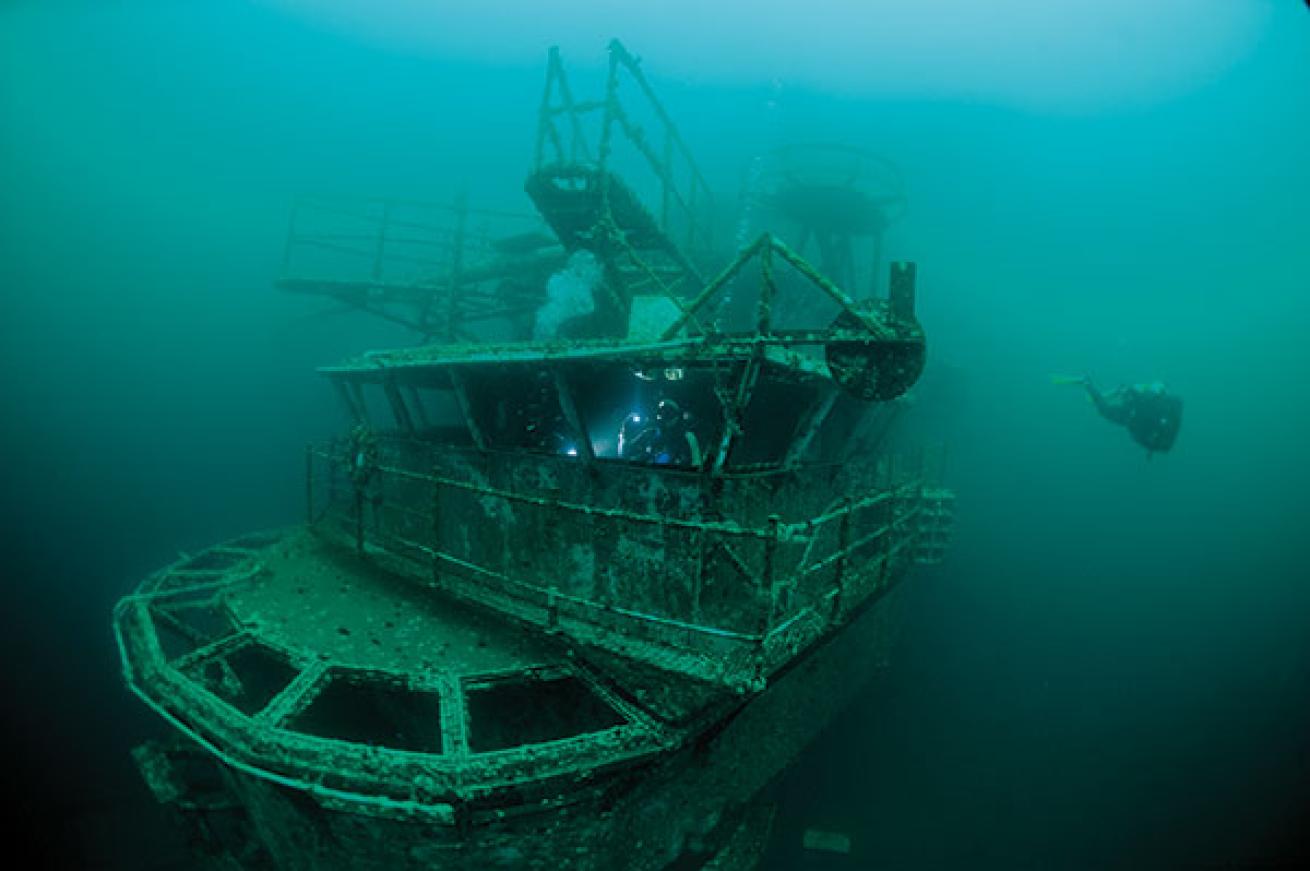
David Doubilet/CorbisThe massive Oriskany is the Panhandle's signature dive.
In addition to shipwrecks, Panhandle waters offer a variety of additional fish habitats. The most interesting natural reefs in the northern Gulf are ledges. Undercut limestone ridges with reliefs of up to 5 feet rise from sandy plains, providing an anchor for soft corals and sponges, plus habitat and hiding places for everything from frogfish and lobster to grouper and cobia.
To supplement the existing substrate, various groups have created artificial hard bottoms that range from rubble piles and surplus military ordnance to purpose-made reef-ball arrays. Most require a boat ride for access, but some, such as Pensacola’s Navarre Beach, are within swimming distance of shore.
In fact, the Panhandle has some of the best shore diving in the Southeast, including a pair of excellent jetty dives. The dredged inlets at Destin and Panama City are bolstered by boulder ramparts that provide divers with the equivalent of a nearshore wall dive, populated with a wide variety of interesting marine life. Depths along these breakwaters can range to 50 or 60 feet, and during slack high tide, visibility can often exceed 50 feet. The shore dive at Destin requires a fair bit of a trek across a white-sand strand, while the St. Andrews State Park jetty is a chip shot away from the parking lot.
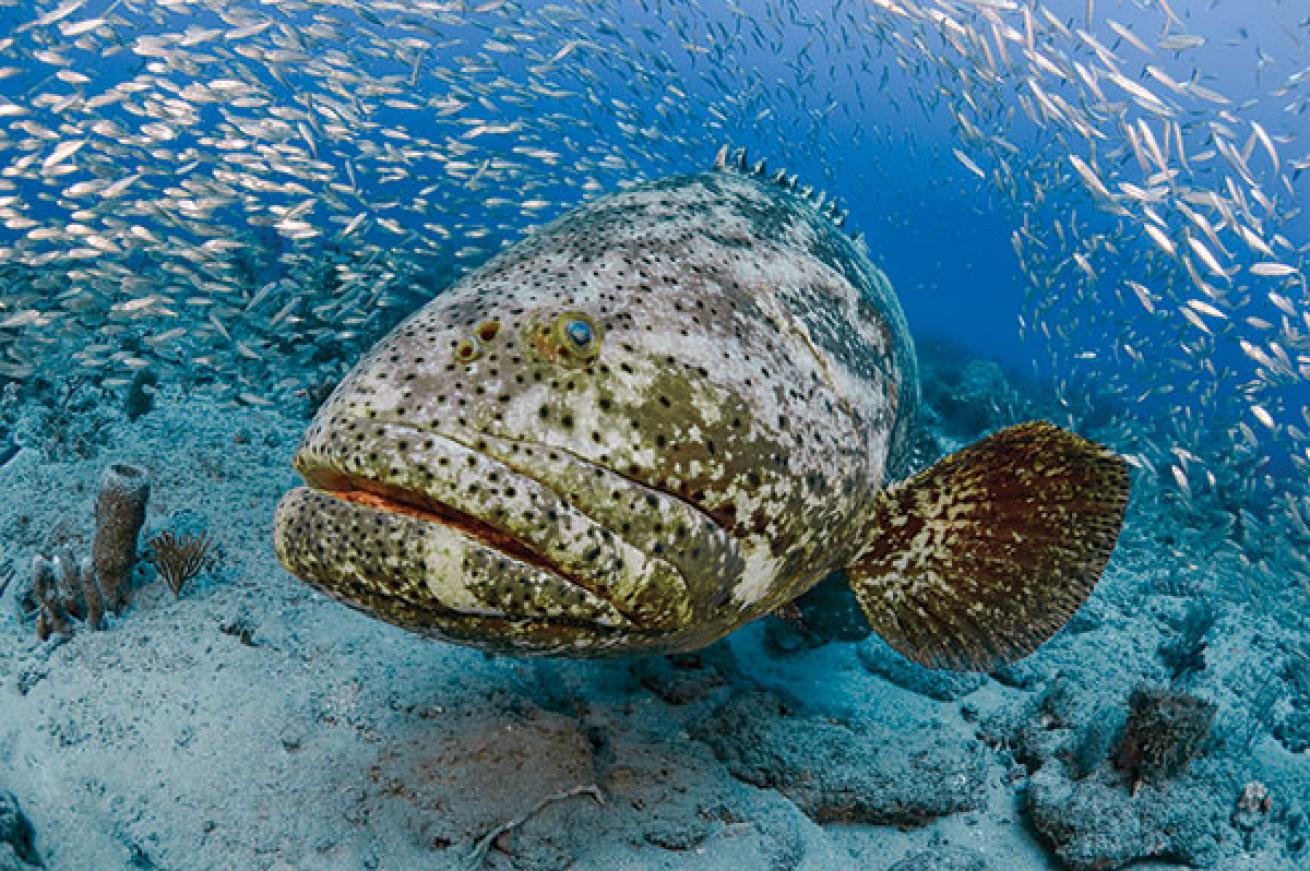
Michael Patrick O'NeillGoliath grouper are one of the many species of fish seen when diving in the Florida Panhandle.
Florida’s Panhandle is an extremely popular vacation spot with visitors from across the southeastern United States, which can be both a boon and a curse for divers. In season, beachfront hotels command a premium price tag, and popular restaurants are always on a wait. But there are bargains to be had for those willing to search, and area dive shops can sometimes negotiate special rates for lodging. Spring break can verge on craziness, but the summer season is more sedate and family friendly. A best bet for those with flexible schedules are the shoulder seasons in May and September. When planning a trip, rather than assuming you can just show up and pick your wreck, it’s a good idea to make a few phone calls to discuss trip schedules and options with the operators.
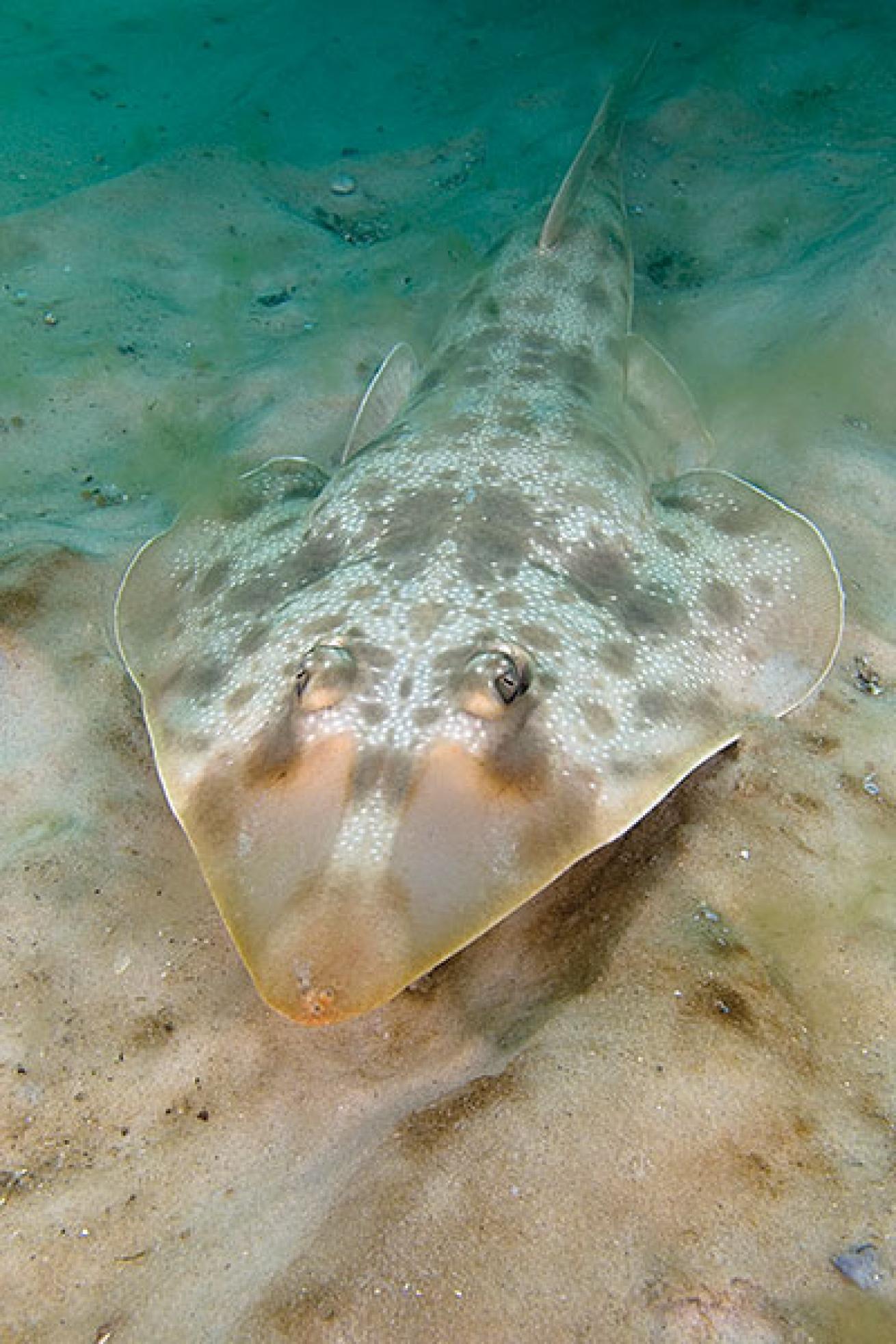
Visual & Written/SuperstockA stealthy guitarfish hides in the sand.
Itinerary
Day One
The adventure begins at Panama City's Pirate’s Cove Marina, where the 36-foot Fintastic, operated by the Dive Locker, takes you for a wreck double-header on the Accokeek and the Black Bart. After checking into the beachfront Chateau Motel (chateaumotel.com), gear up for a high-tide, sunset dive at St. Andrews Jetty, followed by crab claws at Sharky’s (sharkysbeach.com).
Day Two
It’s a 6:30 a.m. departure for Destin to rendezvous with Scuba Tech’s 45-foot Sea Cobra. First stop is Whitehill Reef, then it’s on to the_ Janet_, where especially around the wheelhouse, the cobia and amberjack schools are thick. Stop in for lunch at Dewey Destin’s (destinseafood.com) before heading to Pensacola. Hit Bamboo Willie’s (bamboowillies.com) for sunset, but go easy on the Bushwackers.
Day Three
On advice from the crew at H2O Below, you save the Oriskany for a later date, and instead rack up a pair of wrecks — the rubble field of the_ San Pablo_ and the Pete Tide II, which is covered in swirling schools of baitfish. Head home with four stamps in your Shipwreck Trail Passport, and plans for your next visit to the Panhandle.
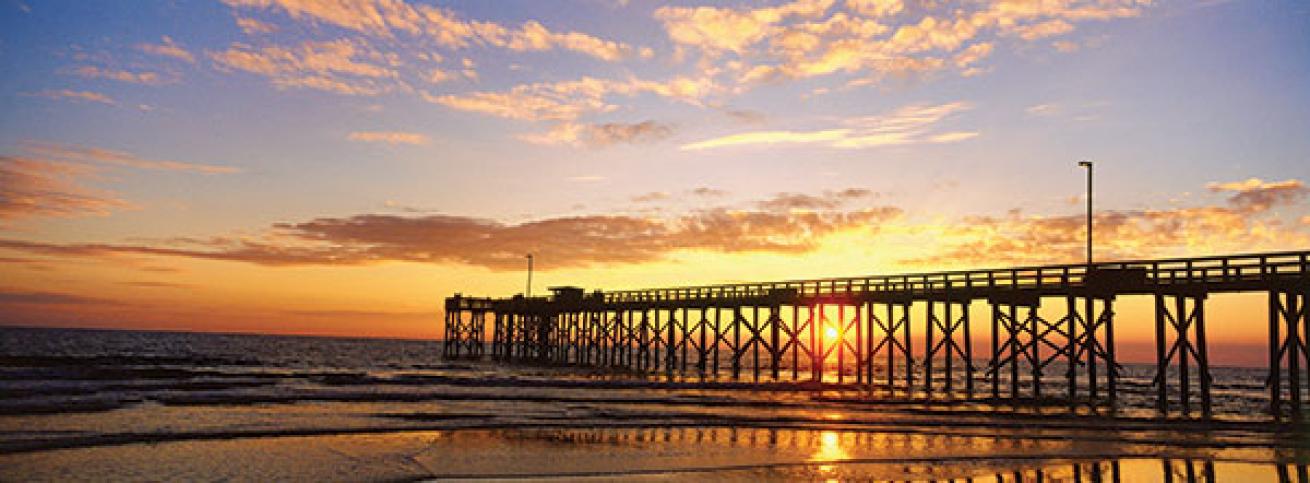
Skip Nall/SuperstockPanhandle sunsets seldom disappoint.
Need to Know
Dive Conditions: Water temperatures can range from the low 60s in winter to the low 80s in summer. It’s best to check with a local operator for information on conditions, and include a spare vest or hood in case things get chilly at depth. Offshore visibility can reach 100 feet on rare occasions, but you can usually count on at least half that offshore, and anywhere from 20 to 50 feet at the jetties and off the beach.
When To Go: The region attracts a small community of year-round divers, but for most, the season doesn’t get started until Easter and can stretch into late October. On summer weekends, both boats and hotels book up early. September provides a prime combination of still-warm water, fewer tourists and lower hotel rates.
Operators: In Panama City, the Dive Locker (divelocker.net) offers two- and three-tank offshore trips for $79 and $109; ScubaTech (scubatechnwfl.com) and Emerald Coast Scuba (divedestin.com) in Destin do two-tank trips for $90; Pensacola’s H2O Below (ussoriskanydiver.com) offers a two-tank trip to the Oriskany for $150, or other area wrecks and reefs for $95. The Gulf Coast Dive Pros (florida-divepros.com) have been serving Pensacola since 1988, with an award-winning SCUBA Training Program; Bay Breeze Dive Center (baybreezescuba.com) is also in Pensacola, and conveniently located directly on the water in Pensacola Bay.
Must Sees: Top Gun fans shouldn’t miss Pensacola’s National Naval Aviation Museum. From parasailing to live music, there’s no shortage of entertainment options in Destin. Panama City offers natural attractions such as Camp Helen State Park and St. Andrews State Park, where you can walk pristine beaches.



